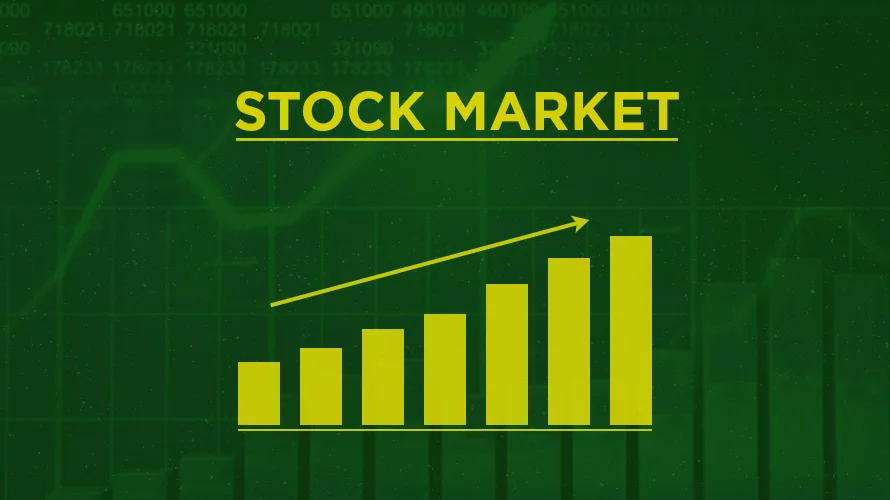Last week, NEPSE wrapped up the week with its highest closing ever. In the same week, over 1.5 million people applied for the IPO (initial public offer) of Nepal Infrastructure Bank Limited (NIFRA), which was Nepal’s biggest IPO ever. That is not only it, the IPO of Chandragiri Hills Limited saw a similar interest as over 1.1 million people applied for the 100,000 shares.
These recent examples are proof that a lot of people are interested and involved in Nepal’s stock market. While many had believed that stock prices would go down due to Covid-19, ever since the market resumed on May 12, 2020, it has gone from 1,200 to 2,300. Every day, stocks of various companies are circuiting as NEPSE’s index has reached up to 2440 on Monday.
Why is this case? Why has there been so much interest in the market? Is the market safe to invest in? Or, is this just a trap for the bigger players to earn money?
We look at a few reasons on why the sudden surge in the market is taking place.
1. Cyclical nature
Investors say that the share market going up is due to its cyclical nature. When they say cyclical, they mean that every few years, the market goes up and down. For example, the market after the first Constituent Assembly post-2006 was doing quite well as the index was 1,175. There was a lot of liquidity in the market as banks handed out loans with ease. But, it soon crashed after the 2008 financial crisis in the west. The banks which had given loans in an imprudent way started to take a hit. The real estate market, where these lending had been commissioned, started to fall as the index in 2012 dropped to as little as 292 due to a cautionary approach taken by the banks.
But, gradually, things started to get better again. The banks started to merge with one another and it started to make a profit. In 2013, around the second CA elections, things started to get better. Liquidity was better thanks to banks merging with one another and before you knew it, in 2016, the index reached as high as 1,800.
The cyclical nature again showed how volatile the market is as, in 2019, the market fell to 1,100. Like before, the market slump continued for nearly two years, after which it is now picking up in this bull phase.
2. Liquidity and remittance
Investment experts also say that the market going up is due to the abundance of liquidity in the market. Almost all commercial banks have matched their deposit targets for the previous fiscal year. This, experts say, is directly proportional to the market going up as people are shifting to investing in the stock market as there are hardly any other investment opportunities.
The reason for an increase in liquidity is due to an influx of remittance. According to reports, remittance inflow increased by 10.9 per cent to Rs 416.81 billion in the first five months of the current fiscal year. Nepal Rastra Bank and World Bank had predicted that the remittance inflow would go down due to Covid-19. However, the opposite has happened. But, bankers and investors say that this rise is due to people aboard using formal channels to send money to Nepal.
As this happened, hundi stopped. The money that came in through these formal channels had to be invested somewhere other than the black market. With nowhere to invest, as times are uncertain, most have jumped to the stock market.
Another reason for the rise in liquidity was the lack of imports. As most businesses were shut and with borders not fully open, major importers all stopped importing goods. With investors’ money stuck in the bank, they started to look for other opportunities. Most started to invest in stocks.

3. Low loan rates and savings rate
This is also a major factor. As banks have an abundance of deposits, they have been giving out loans at as little at 8 per cent compared to 13 per cent in 2019. A lot of people have started taking loans from banks to invest in shares and they feel that the return will be higher than the risk if they do it right.
With savings rate at 1 – 3 per cent, experts say, people have resorted to investing in the share market because they do not see value in keeping the money in the bank.
4. Nepse going online
Nepse officially launched its online trading system in November 2018. But, people, wanting to be in the know, always believed in going to the brokers to trade. However, due to Covid-19, that changed as SEBON instructed NEPSE to encourage online trading. This meant more participation as anyone with a phone or a laptop could trade without having to go to a broker. This access to the share market meant everyone started investing. This goes hand in hand with liquidity and a lack of investment opportunities. As people were stuck at home, they started investing little by little on shares.
This also happened in India and Pakistan where the share market started to do well after they started doing online transactions.

5. Margin lending by banks
Due to high liquidity, banks started margin lending (lending money backed by shares). As interest rates were low, various investors in the market started to do this. With a lack of economic activity, stagnant industries and no imports, banks started handing out margin loans to interested investors. With more money being dumped into the market, share prices kept going up. With that happening, more investors started to margin lend from banks to create a loop resulting in the rise in Nepal’s stock market.
6. Banks investing in financial institutions
A while ago, banks were not allowed to invest in financial institutions. But, since the market started to crash in 2019, they have started to invest in the stocks of financial institutions. This trend continued as they saw a bargain in the market. There were stocks that were valued way below what it should have. These stocks were nabbed by these banks and financial institutions: a reason why shares of insurance companies and micro-finances, which have limited shares in the market, have increased.
7. Bargains
This is an important factor, many investors claim. As the share market took a dip in 2019, there were many shares in the market which had the potential to go up. Smart investors, who had researched about these stocks, bought them. With prices rising, many soon started following suit as a result the market started to go up. A good bargain stock example is NIC Asia and NCC banks along with Nepal Reinsurance Pvt Ltd, all of whose stocks have gone significantly up in the past few months.
8. Envy and fear of missing out
Another reason for the market getting better is envy. People had the fear of missing out on a chance to earn money. For example, A invested in shares and earned Rs 100,000 in a month. When she tells that to B or if B finds out, she will have that urge to invest in shares. This human nature of envy has encouraged a lot of people to invest in shares. This is because people feel that if they do not get into the scene right now, they will miss out on the returns. An example of that can be seen at banks where hundreds of people were queued up to open their Demat accounts to apply for the IPOs. While only 300,000 would apply for the IPOs, this year NIFRA had over 1.5 million applications. This was more than 5 per cent of the population, which proves that there is a lot of interest among people when it comes to the share investment.























